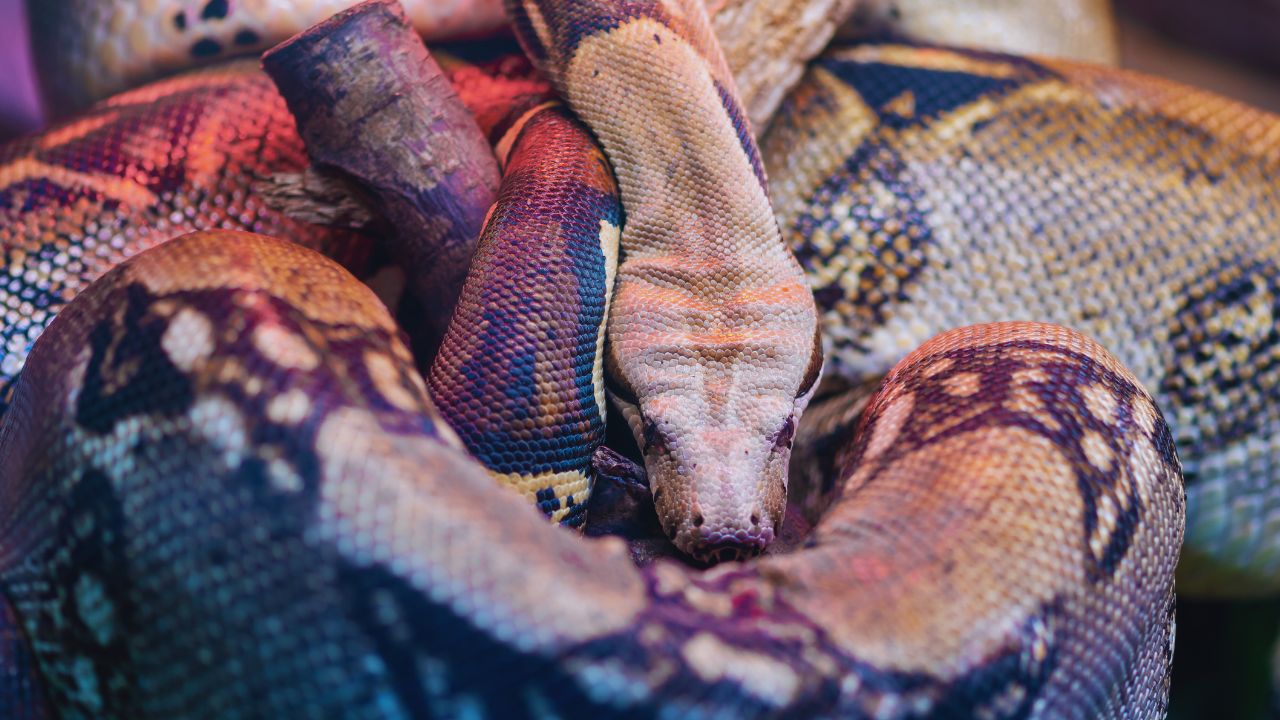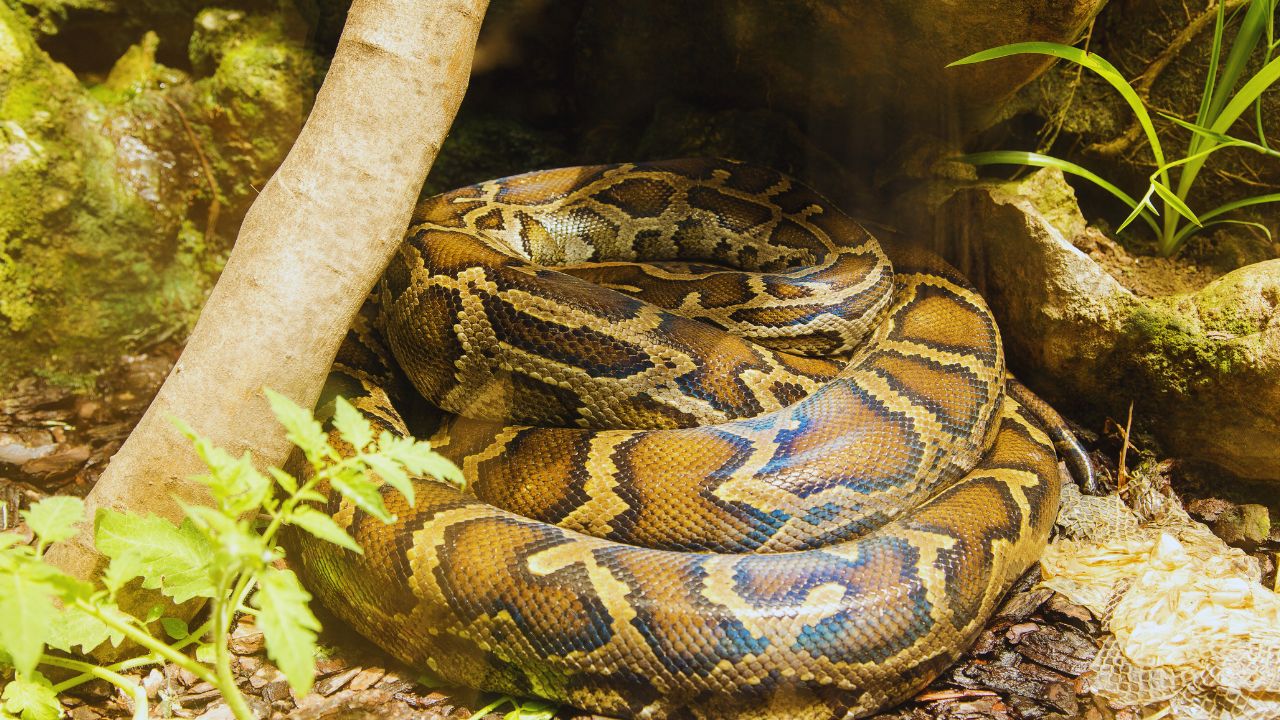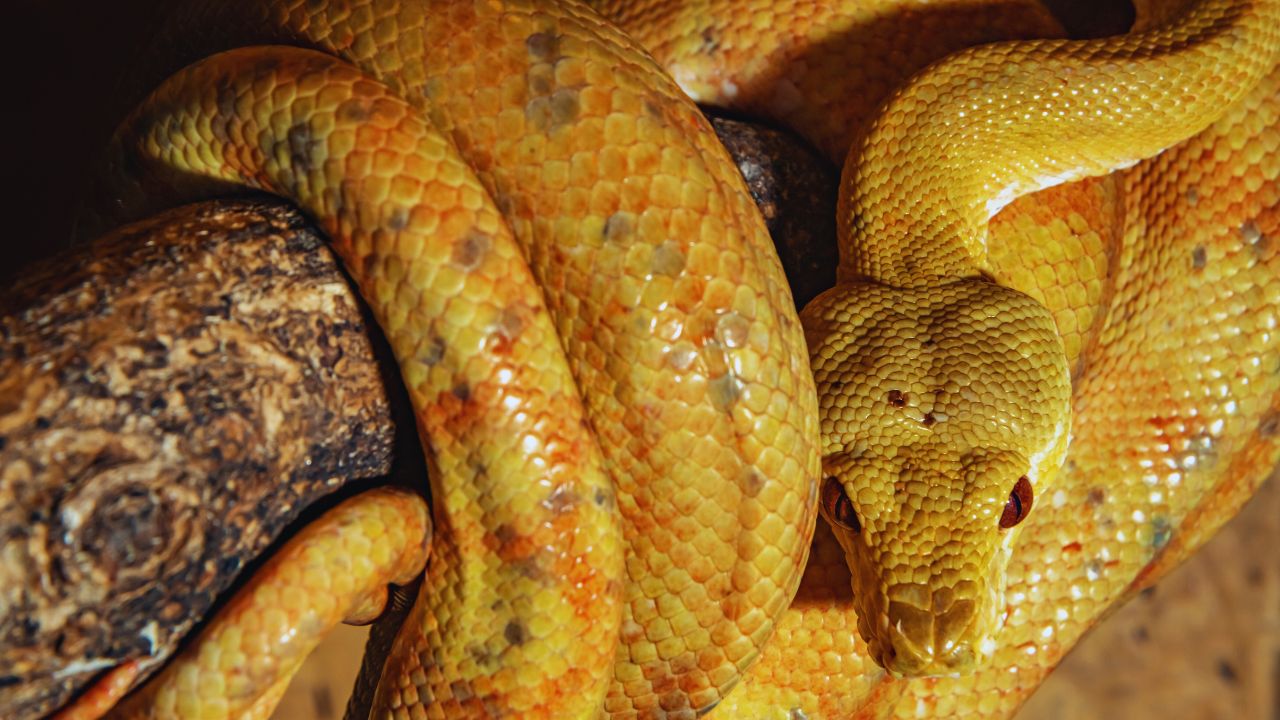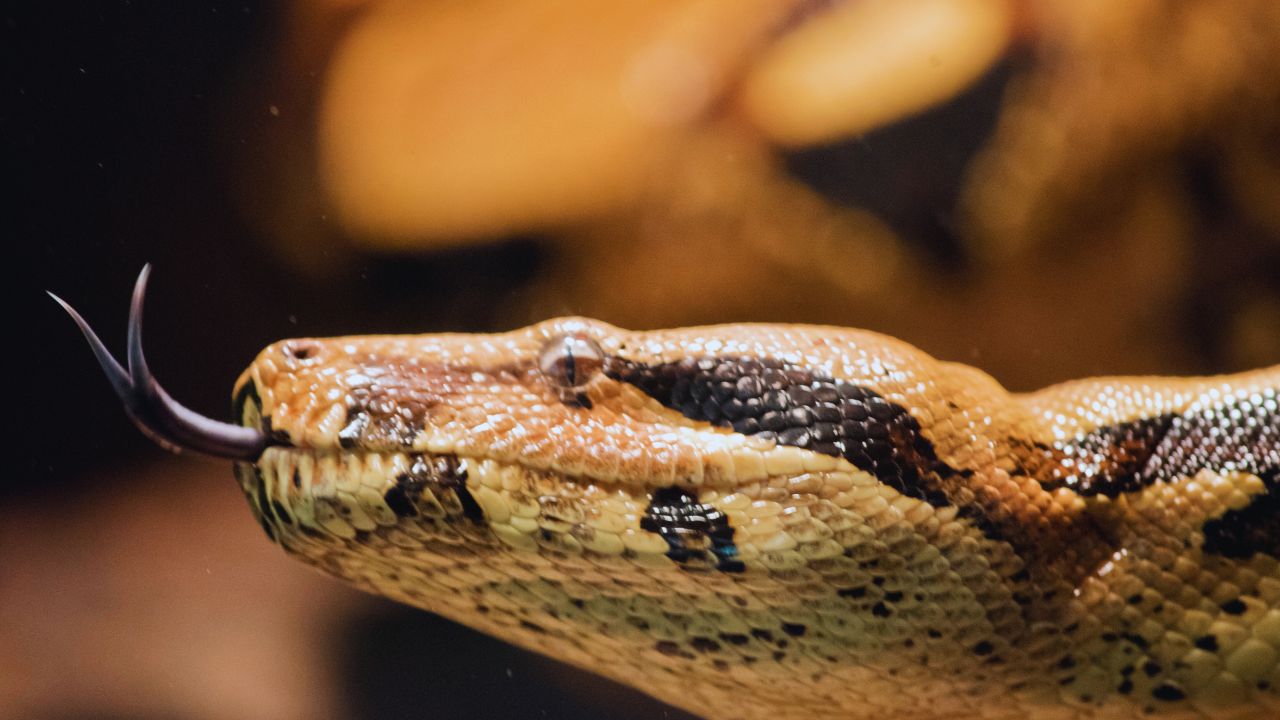Though many amazing species abound in the animal realm, few can equal the Rainbow Boa’s appeal and intrigue. Epicrates cenchria. Herpetologists, breeders, and reptile aficionados all have taken notice of this type of boa constrictor, which is renowned for its iridescent scales that glitter with a kaleidoscope of hues. Examining the biology, habitat, behavior, and conservation of the Rainbow Boa provides a complete picture of one of the most fascinating serpens in nature.

Physical properties and biology
Usually reaching lengths of 4 to 6 feet, the medium-sized Rainbow Boa is a snake that, in some instances, may grow even longer. Its skin is extremely remarkable; it has a rainbow-like iridescence under light. Microscopic ridges on the scales that refract light provide the illusion of many hues, thereby generating this phenomena. With black patches or bands around the body, the Rainbow Boa’s basic color—which could be reddish-brown or orange—adds to its unique look.
Rainbow Boas have multiple subspecies, each with minute color and pattern variances. Particularly prized for its vivid hues, the Brazilian Rainbow Boa (Epicrates cenchria) is the most often recognized subspecies. Though their color is more muted, some subspecies—like the Colombian Rainbow Boa (Epicrates maurus)—are nonetheless very appealing in their own way.
Physical Characteristics of the Rainbow Boa
| Feature | Description |
|---|---|
| Scientific Name | Epicrates cenchria |
| Average Length | 4 to 6 feet (can grow longer in some cases) |
| Color | Reddish-brown to orange with dark spots or bands |
| Iridescence | Rainbow-like shimmer due to microscopic scale ridges |
| Lifespan | Up to 20 years in the wild; 25 to 30 years in captivity |
| Subspecies | Brazilian Rainbow Boa, Colombian Rainbow Boa, etc. |
Natural Environment and Distribution
Mostly widespread in Central and South America, Rainbow Boas span Costa Rica in the north to Argentina in the south. From tropical rainforests to savannas, they live in a range of habitats, yet are most often connected with humid, wooded places near water sources like rivers and streams. A natural wonder in its habitat, the dampness in these surroundings not only meets the snake’s bodily demands but also increases the iridescence of its scales.
For instance, the Brazilian Rainbow Boa enjoys plenty of shelter and prey in the Amazon Basin’s deep jungles. Though they are mostly terrestrial, these snakes are also great swimmers and climbers; they often ascend trees in pursuit of food or refuge. One of the reasons they have such a broad distribution throughout the continent is their capacity for adaptation to several surroundings.

Diet and Behavior
Since Rainbow Boas are nocturnal—that is, most active at night— Usually only gathering during the mating season, they are solitary animals. Like other animals, they are constrictors—that is, they coil around their victim and squeeze until it suffocates. Small animals, birds, and sometimes reptiles and amphibians make up their mostly consumed food.
Smaller species like lizards and frogs are common food for young Rainbow Boas, but as they develop, their diet moves to bigger mammals like rodents. Usually given a diet of properly sized mice or rats in captivity, Rainbow Boas Usually an adult Rainbow Boa will eat once every one to two weeks; they have a sluggish metabolism and do not have to feed constantly.
Rainbow Boas are not violent toward people despite their somewhat intimidating hunting techniques. Usually gentle, they may become somewhat used to handling if grown in captivity. They are wild creatures with natural tendencies; hence, they should still be treated with respect nonetheless.
Habitat and Distribution of the Rainbow Boa
| Region | Environment Type | Notable Locations |
|---|---|---|
| Central America | Tropical rainforests, savannas | Costa Rica |
| South America | Humid forests near water sources | Amazon Basin (Brazil), Venezuela |
| Preferred Habitat | Forested areas with high humidity and proximity to water | |
| Range | From Costa Rica to Argentina |
Reproduction and Life Span
Rainbow Boas achieve sexual maturity between two and four years of age. Usually taking place in the colder months, breeding involves females delivering live offspring after a five-month gestation period. Unlike many reptiles, Rainbow Boas are ovoviviparous—that is, the eggs develop and hatch within the mother’s body. Usually including anything from 10 to 20 young, each measuring around 15 to 20 inches at birth, a litter includes.
The babies have to fend for themselves right away; they are independent from birth. Their first few years see fast growth, and when they outgrow their skin, they lose it often. Although Rainbow Boas may live for up to 20 years in the wild, with appropriate care, they can live much longer—sometimes 25 to 30 years—in captivity.

Rainbow Boas Under Domestication
Because of their remarkable look and very small size, rainbow boas are somewhat sought after in the pet market. To flourish in captivity, however, they need for particular attention. Since these snakes originate from high-humidity settings, maintaining appropriate humidity levels is quite vital. Lack of enough moisture may cause Rainbow Boas health problems like respiratory infections and trouble shedding.
A Rainbow Boa’s container should resemble its natural environment as nearly exact as possible. This covers hiding places and branches for climbing as well as a temperature gradient with a warm basking area and a colder side. Additionally necessary is a water dish big enough for the snake to soak in, as Rainbow Boas like soaking to control body temperature and preserve hydration.
Most Rainbow Boas will gladly eat pre-killed or frozen-thawed mice; hence, feeding in captivity is really easy. Care should be used, however, not to overfeed, as obesity may be an issue in confined snakes. Although handling should be limited during shedding seasons, when the snake may be more agitated, regular handling may help Rainbow Boas get used to human contact.
Conservation Situation and Risk Factors
Although they are not regarded as endangered right now, habitat erosion and the illicit pet trade pose challenges to rainbow boas as well as to many other animal species. Given that it limits the habitat these snakes and many other species have, deforestation in the Amazon Basin and other areas of their range raises serious issues. Furthermore, while Rainbow Boas are grown in captivity, wild-caught animals are still sometimes sought for, which strains wild numbers.
Rainbow Boas conservation initiatives mostly concentrate on habitat preservation and support of sustainable captive breeding projects. One may enjoy these gorgeous snakes in captivity and simultaneously save them in the wild by making sure wild populations stay unaltered and that the pet trade does not harm them.

Rainbow Boa Behavior and Diet
One amazing animal that best embodies the beauty and variety of the natural world is the Rainbow Boa. Both environmentalists and reptile aficionados have particular affection for it because of its amazing iridescent scales and interesting habits. Whether in the wild or as pets, anybody interested in Rainbow Boas must first grasp their biology, habitat, and requirements.

Like any species, careful preservation and management are essential to making sure that future generations may remain in wonder at the unique beauty of the Rainbow Boa. We can help to save this amazing species for years to come by supporting habitat preservation initiatives and pushing ethical pet trade practices.





